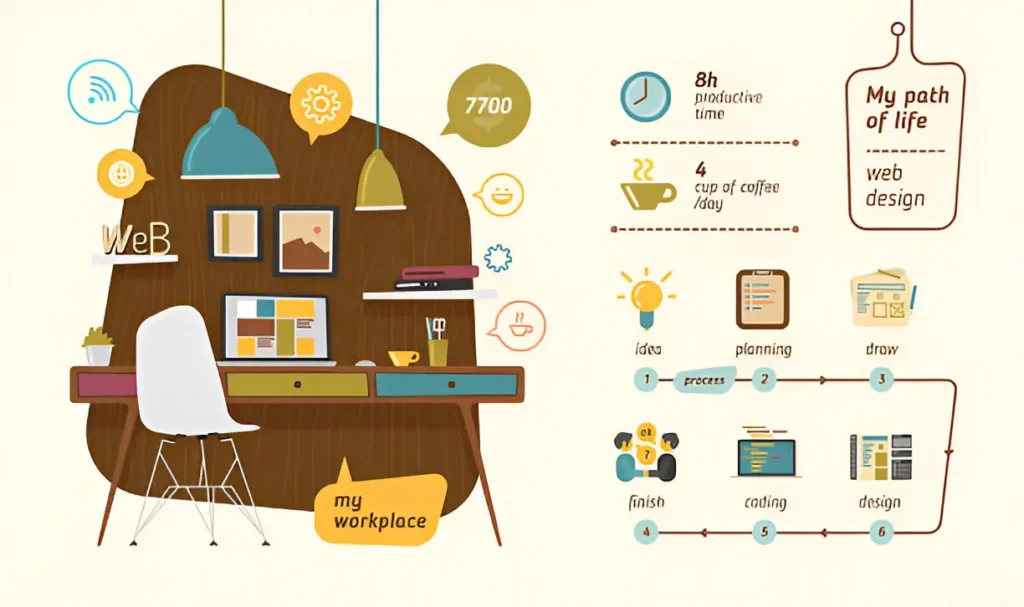Your workspace has a direct impact on your ability to focus, create, and perform. A cluttered, uninspiring environment can stifle your motivation, while a well-designed space can enhance concentration and efficiency. Transforming your workspace doesn’t require a massive budget or a complete overhaul. With a few creative adjustments, you can create an environment that supports your goals and boosts your output.
Here are ten creative ways to transform your workspace for maximum productivity.
1. Declutter and Organize Your Desk
A clean desk promotes a clear mind. Start by removing everything from your desk surface and sorting items into three categories: keep, store, or discard. Only essential tools should return to your desktop. Use desk organizers like pen holders, trays, and file sorters to give every item a designated home. This simple act reduces visual noise and minimizes distractions, allowing you to focus on the task at hand.
2. Optimize Your Lighting
Poor lighting can cause eye strain, headaches, and fatigue, all of which hinder productivity. Maximize natural light by positioning your desk near a window if possible. Supplement with layered artificial lighting. A good desk lamp provides focused task lighting, while ambient overhead light can brighten the entire room. Choose bulbs that mimic natural daylight for the best effect on your energy levels and mood.
3. Introduce Greenery
Bringing plants into your workspace does more than just add a touch of nature. Studies have shown that indoor plants can reduce stress, improve air quality, and even increase concentration. Opt for low-maintenance varieties like snake plants, ZZ plants, or pothos. A small succulent or a vibrant fern on your desk can make the space feel more alive and refreshing.
4. Personalize with Intention
While a minimalist approach is beneficial, a sterile environment can feel uninspiring. Personalize your space with items that motivate you, but do so with intention to avoid creating new clutter. A framed photo, a piece of art, or a motivational quote can serve as a positive focal point. Choose items that bring you joy and align with your professional goals.
5. Upgrade Your Chair
You spend a significant amount of time sitting at your desk, so comfort is paramount. An uncomfortable chair can lead to back pain and physical distraction. Invest in an ergonomic chair that provides proper lumbar support and allows for adjustments in height and armrests. A comfortable and supportive chair is a crucial investment in your long-term health and daily productivity.
6. Manage Your Cables
A tangled mess of cords and cables creates visual clutter and can be a frustrating hazard. Use cable management solutions like clips, sleeves, or boxes to neatly route and conceal wires. Taming your cable situation is a small change that makes a big difference in creating a clean, organized, and professional-looking workspace.
7. Use Vertical Space
When desk space is limited, think vertically. Install floating shelves above your desk to store books, supplies, or decorative items. A pegboard or a magnetic strip on the wall can keep frequently used tools within arm’s reach without cluttering your work surface. Utilizing vertical space helps you stay organized while freeing up valuable desktop real estate.
8. Implement Smart Storage Solutions
Effective storage is the key to maintaining an organized workspace. Beyond the desk, consider how you manage supplies and documents. Built-in shelving or dedicated filing cabinets can keep your office tidy. For home offices that double as guest rooms, solutions like custom closet systems in Salt Lake City can create integrated, hidden storage that keeps work materials out of sight when not in use, helping you mentally disconnect after hours.
9. Create a Vision Board
A vision board is a powerful tool for staying focused on your goals. Create a physical or digital collage of images, quotes, and words that represent what you want to achieve. Placing it within your line of sight serves as a constant reminder of your purpose, helping you stay motivated and driven throughout the workday.
10. Define Your Zones
If your workspace is part of a larger room, create distinct zones to mentally separate work from personal life. Use a rug to define the office area or arrange furniture to create a visual boundary. This separation helps train your brain to switch into work mode when you enter the space and to disengage when you leave, promoting a healthier work-life balance.
Also Read-The Difference Between UV DTF and DTF Printing Technology:
